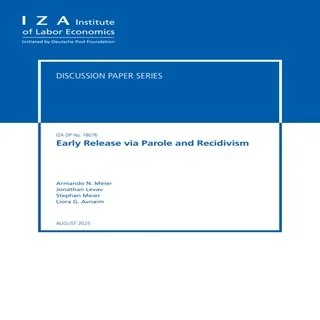By Evarn J. Ooi
Aim
To investigate the impact of the Practice Guide for Intervention (PGI) on re-offending and imprisonment among supervised offenders serving a community-based order in New South Wales (NSW), specifically, either a good behaviour bond or a suspended sentence.
Method
Introduced in June 2016, PGI led to a substantial overhaul in the delivery of supervision services by NSW Community Corrections Officers (CCOs). Using a difference-in-differences (DiD) strategy, we compare re-offending (imprisonment) between supervised and unsupervised offenders serving a good behaviour bond (suspended sentence) before and after the introduction of PGI. Re-offending (imprisonment) is measured as the probability of committing a new and proven offence (being imprisoned) within 12 months of index court finalisation. The pre-PGI period includes offenders with a finalised court appearance between June and December 2014. There are two post-PGI periods. The first post-PGI period includes offenders with a finalised court appearance between June and December 2016 (the first six months after PGI was introduced). The second post-PGI period includes offenders with a finalised court appearance between June and December 2017, when the use of PGI across NSW was approaching its peak.
Results
Among supervised offenders serving a good behaviour bond, the DiD estimates indicate a small 1 to 2 percentage point increase in re-offending after the introduction of PGI compared with unsupervised offenders. However, the difference is not statistically significant. For supervised offenders sentenced to a suspended sentence, we also find a slight increase in the probability of imprisonment, but the increase is not statistically significant.
Conclusion
Overall, we do not find evidence that the introduction of PGI led to a reduction in re-offending among supervised offenders sentenced to a good behaviour bond, nor do we find a reduction in the probability of imprisonment among supervised offenders serving a suspended sentence.
(Crime and Justice Bulletin No. 229). Sydney: NSW Bureau of Crime Statistics and Research. 2020. 27p.



